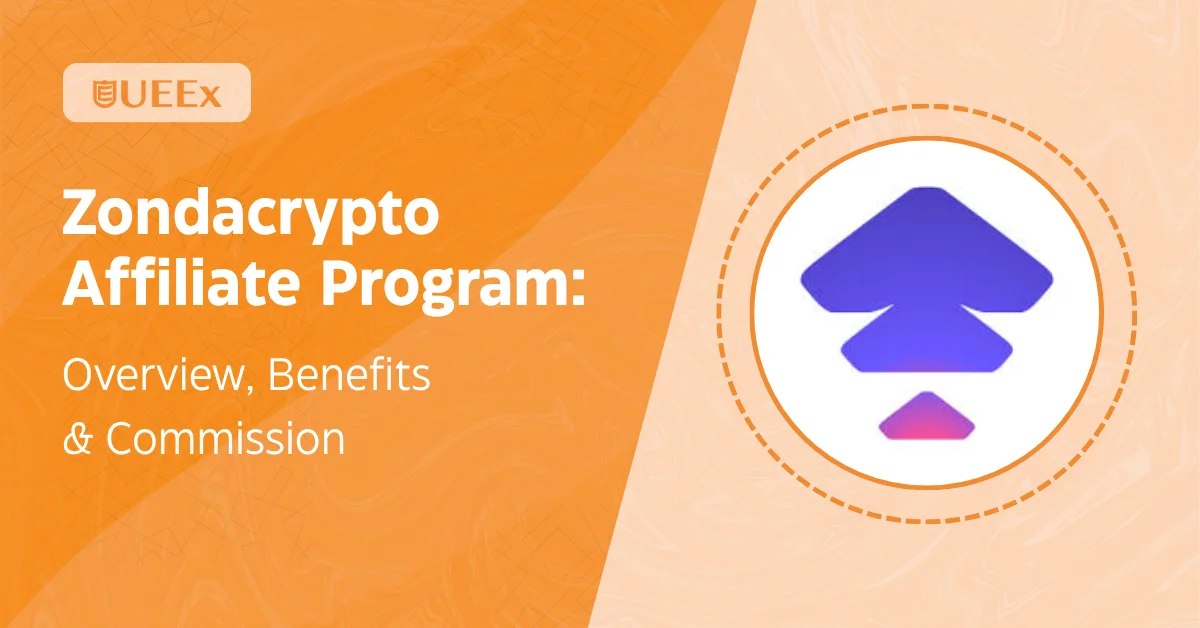If you’re familiar with the SEC fraud case against Do Kwon, the co-founder of Terraform Labs, or the alleged fraud case against Touzi Capital in a Crypto Mining Fund Scheme, then you’ll know that these are crypto frauds that are entirely different from P2P scams.
While those cases often involve large-scale schemes, P2P crypto scams happen in more personal, direct settings—usually between two individuals on trusted platforms like Binance P2P or Paxful.
P2P crypto scams have become increasingly common as peer-to-peer trading gains popularity. From fake proof of payment to impersonation and chargeback scams, these schemes can be subtle but devastating. Knowing how to spot them is crucial.
In this guide, we’ll break down practical ways to avoid P2P crypto scams and crypto fraud before it’s too late.
Key Takeaways
- P2P crypto trading enables individuals to buy and sell cryptocurrencies directly with one another, bypassing intermediaries, through platforms that offer escrow services.
- Scammers often use fake proof of payment, chargeback schemes, and other tactics to deceive P2P traders into releasing crypto before payment is confirmed.
- Protect yourself by using trusted platforms, confirming payments before releasing crypto, and avoiding communication outside of official channels.
- Always report suspicious activity to platform support and keep records of all transactions to protect yourself in case of a dispute.
- Enable two-factor authentication and keep your login details private to enhance the security of your P2P trading accounts.
What is P2P Trading in Cryptocurrency?
Source: Freepik
P2P trading in cryptocurrency, short for peer-to-peer trading, is a direct exchange of crypto assets between two individuals without the need for an intermediary or centralized exchange. Instead of buying or selling through a broker, users connect directly through a P2P platform, where they can negotiate prices, payment methods, and terms.
These platforms, such as Binance P2P, OKX P2P, and Paxful, act as marketplaces that provide escrow services to protect both the buyer and the seller. When a trade is initiated, the crypto is held in escrow until the seller confirms payment. Only then is the crypto released.
P2P trading offers flexibility, multiple local payment options, and often better rates, but it also opens the door to P2P crypto scams and crypto frauds if safety measures are ignored.
Common Types of P2P Crypto Scams and Frauds
Peer-to-peer crypto trading can be convenient, but scammers often exploit its trust-based structure.
Below are the most common types of P2P crypto scams and frauds:
Fake Proof of Payment
In this scam, the buyer sends a screenshot or message claiming they’ve completed payment. In reality, no money was transferred. If the seller doesn’t double-check their bank or wallet, they may release the crypto and lose it permanently.
In 2022, several users on Binance P2P reported losing funds after trusting screenshots that mimicked mobile bank transfer confirmations. Always verify payment directly through your account—never rely on screenshots.
Chargeback Scams
Some scammers use reversible payment methods, such as PayPal, credit cards, or specific mobile wallets. After receiving the crypto, they file a chargeback, claiming the transaction was unauthorized. The money gets reversed, and the seller is left with nothing. Stick to irreversible payment options and use platforms with escrow protection.
Impersonation of Trusted Traders
Scammers create fake profiles mimicking reputable traders. They might copy usernames, use identical photos, and even counterfeit ratings. This is common on forums and social media.
LocalCryptos warns that scammers impersonate staff members by writing “Admin,” “Support,” or “Arbitrator” in trade chats and pressure users to release escrow. The platform displays red banners when users are suspended; however, scammers attempt to bypass this by using direct messaging.
Always verify a trader’s profile directly on the P2P platform and avoid deals arranged outside the official channels.
Triangle Scams
In a triangle scam, the attacker involves a third person who is unaware they’re part of the fraud. The scammer purchases cryptocurrency from a seller using funds stolen from another individual, such as those from a hacked bank account. Eventually, the real owner files a dispute or chargeback, causing the seller to lose both the crypto and the payment.
Indian crypto users report scammers using OLX/Quicker marketplace fraud, where they post goods for sale, direct legitimate buyers to send money to unwitting peer-to-peer (P2P) sellers’ accounts, and then collect USDT, while both victims lose money.
Cancel Order After Payment Completed
Here, the buyer sends a real payment but quickly cancels the order on the P2P platform before the seller can release the crypto. The platform assumes the trade is incomplete and might not honor it if a dispute arises.
Multiple exchanges, including Binance and Bybit, have issued warnings about this tactic, noting that scammers often pressure sellers to act quickly.
Always release cryptocurrency only after confirming that the order is still active and payment has been fully received.
Phishing Links or Fake Platforms
Scammers create websites that closely resemble trusted peer-to-peer (P2P) platforms. Victims are tricked into entering their login credentials or private keys. Once done, the scammer gains full access to their accounts.
On January 26, 2019, LocalBitcoins users were targeted in a phishing attack that exploited a vulnerability in the platform’s forum. The attack redirected users to a fake site that stole their 2FA codes, resulting in the theft of 7.95 BTC (approximately $28,134 at the time) from at least six accounts.
Always double-check URLs and avoid clicking on P2P links shared on random social media groups.
Man-in-the-Middle (MitM) Scams
This involves a scammer acting as a bridge between two unsuspecting parties. The attacker copies information from one and relays it to the other, pretending to be both people. It often ends with one party losing their crypto while believing the trade was legitimate.
Security experts identify sophisticated man-in-the-middle (MitM) attacks on peer-to-peer (P2P) messaging apps, where fraudsters intercept communications and manipulate both parties into sending money or cryptocurrency to the wrong accounts.
Only communicate through secure peer-to-peer (P2P) platforms and avoid intermediaries.
Over-the-Counter (OTC) Scams on Social Media
Many traders arrange over-the-counter (OTC) trades via messaging platforms such as Telegram, WhatsApp, or Facebook. Scammers create fake business profiles or pretend to be admins of popular crypto groups.
Federal reports indicate that the top platforms for crypto scams are Instagram (32%), Facebook (26%), WhatsApp (9%), and Telegram (7%), with scammers targeting users specifically for fake investment opportunities.
Without escrow or platform protection, these trades can easily lead to fraud. Unless you’re dealing with a verified OTC desk, it’s safer to stick with known P2P platforms.
Cash-in-Person Transactions
While some people still prefer meeting in person for crypto trades, this method is highly risky. Scammers can use counterfeit money, disappear during verification, or even steal from the seller. If cash transactions are unavoidable, always meet in a secure, public place with CCTV, and never go alone.
Too-Good-To-Be-True Offers
If someone offers significantly better rates than the market, it’s often bait for a scam. These deals are designed to lure unsuspecting users into releasing crypto early or bypassing escrow.
Canadian LocalBitcoins users were targeted explicitly by scammers advertising Bitcoin purchases at prices “much higher than market rate” to attract sellers, then executing e-transfer fraud schemes. Always question unusual offers and compare them with current market prices before making a decision.
How To Avoid P2P Crypto Scams
Now that you know the different types of P2P crypto scams and crypto frauds, it’s time to focus on how to avoid them and also how to protect against crypto scams.
These safety tips are practical, straightforward, and based on real-life experiences from traders who have learned the hard way.
Only Use Trusted and Verified P2P Platforms
Stick to platforms that are widely known and offer built-in security tools like escrow protection, identity verification, and dispute resolution. Examples include Binance P2P, Bybit P2P, Paxful, and OKX P2P.
Avoid third-party apps or random websites promoted in Telegram or WhatsApp groups. If a platform isn’t widely recognized or lacks reviews, don’t take the risk.
Never Communicate or Complete Deals Outside the Platform
Once you agree to trade on a P2P platform, keep all communication within that system. Scammers often ask to move to private chats where they can avoid detection. If something goes wrong outside the platform, support won’t be able to help. Don’t send money or release crypto based on private discussions or screenshots.
Use Platforms with Escrow Protection
Escrow is your safety net. When a trade starts, the crypto is locked in the platform’s escrow system and only released when payment is confirmed. This prevents either party from running away with the funds. If your platform doesn’t offer escrow, you’re wide open to fraud.
Always Report Suspicious Activity
Don’t stay silent if a trader tries something shady—like asking for off-platform payments, delaying confirmations, or using pressure tactics. Most platforms have a “report” button or support chat. By reporting quickly, you protect both yourself and other users.
Enable 2FA and Keep Your Login Details Private
Two-factor authentication (2FA) adds an extra layer of protection to your accounts. Even if someone gets your password, they can’t log in without the second code. Avoid using public Wi-Fi, don’t reuse passwords, and never share your credentials with anyone, even if they claim to be support staff.
Always Record Your Transactions
You should:
- Take screenshots of chats, payment confirmations, and order IDs
- Save receipts or messages proving payment was made
- Keep a personal log of who you traded with, the date, and the transaction details
This makes it easier to resolve disputes and defend yourself if a scam is attempted.
Confirm Transactions Reflect in Your Bank Account
Don’t release crypto based on messages or screenshots alone. Open your bank app or wallet and confirm that the payment has arrived and is not pending. If the transaction hasn’t reflected, don’t proceed—even if the buyer insists they’ve paid.
Interact Only via Official Support Channels
Scammers often pose as platform admins or support staff on social media. If someone reaches out offering “help” or requests account info, ignore them. Use the official support buttons or contact methods listed on the P2P platform itself. Never share sensitive info in Telegram or WhatsApp chats.
Avoid Traders with Low Completion or Negative Feedback
Before you accept a trade, check the other person’s profile:
- What’s their order completion rate?
- How many successful trades have they done?
- Do they have positive feedback from other users?
A low score or lots of negative comments are major red flags. Stick with traders who have a strong track record.
Warning Signs of a P2P Crypto Scam
Being able to recognize red flags early can save you from losing your funds to P2P crypto scams and crypto fraud.
Here are the most common warning signs to watch for when trading on any peer-to-peer platform:
Rush to Close the Deal
If a buyer or seller is unusually eager to complete the trade quickly, pushing you to release funds, skip steps, or “just trust them,” it’s a red flag. Scammers use urgency to get you to act without verifying important details. Legitimate traders understand that safety takes time and don’t pressure you to rush.
Request to Communicate Outside the Platform
This is one of the clearest signs of a scam. Once a trader insists on taking the conversation to WhatsApp, Telegram, or any messaging app, be cautious. Off-platform communication enables them to circumvent platform rules, making it more challenging to report fraud if it occurs.
Unrealistic Rates or Prices
Scammers often lure victims with rates that are significantly lower than the market average. For example, someone offering to buy your crypto at a premium or sell at a huge discount is likely trying to lure you into a trap. Always compare offers with real-time market prices and question any deal that seems “too good.”
Fake or Suspicious Profiles
Profiles with very few completed trades, no reviews, or generic profile pictures should raise concern. Also, be careful of newly created accounts with “perfect” reviews—it could be a fake account using manipulated feedback. Always check the trader’s rating, order history, and how long they’ve been active on the platform.
Pressure to Release Crypto Before Confirming Payment
No matter how convincing someone seems, never release your crypto until the payment reflects in your account. Scammers will often send fake screenshots or claim delays to get you to release early. Once the crypto is released, it’s nearly impossible to get it back if the payment was never made.
What To Do If You Fall Victim to a P2P Crypto Scam
Source: Freepik
Even with all precautions, scams can still happen. If you fall victim to a P2P crypto scam, acting quickly and correctly can make a big difference.
Here’s what you should do:
Don’t Panic—Document Everything
The first step is to stay calm and gather all the evidence. Take screenshots of:
- The chat conversation
- Payment receipts or failed transactions
- The scammer’s profile
- The order history and timestamps
Having a clear record strengthens your case if you need to file a dispute or report.
Report the Scam Immediately to the Platform
Most P2P platforms have a “Report” or “Dispute” feature. Use it right away. The earlier you act, the better your chances of recovering funds—especially if the scammer hasn’t withdrawn the crypto yet. Include all relevant evidence and a clear explanation of what happened. Don’t leave out details.
Contact Customer Support via Official Channels
Reach out to the platform’s support team through their official website or in-app chat. Avoid messaging random people claiming to be support staff on social media. Provide your order ID, screenshots, and a timeline of events to speed up the investigation.
File a Police or Cybercrime Report
If the scam involves large amounts or identifiable personal details (like account numbers or mobile contacts), report it to local authorities or a cybercrime unit. In the United States, for example, you can report to the Federal Trade Commission or the Internet Crime Complaint Center (IC3). Having a police report may also help in further investigations by the platform.
Inform Your Bank or Payment Provider
If any fiat transaction was involved, contact your bank immediately to report fraudulent activity. In some cases, especially if the payment is still processing, they may be able to flag or reverse the transaction.
Alert the Community
If you got scammed by someone impersonating a trader or using a specific payment method, let others know. Report the user in crypto communities and warn others to steer clear of them. Sharing helps prevent further scams.
Final Thoughts
No one wants to get scammed during a crypto transaction, especially when trust is involved in peer-to-peer trading. By staying alert, choosing verified platforms, and recognizing warning signs early, you can avoid most P2P crypto scams and crypto fraud.
Always confirm payments, use escrow services, and protect your login credentials. The goal is to trade safely and confidently, without risking your assets. Let each transaction be guided by caution, not just profit. Security should always be part of your crypto strategy, not an afterthought.
Frequently Asked Questions
How To Avoid Scams on Binance P2P?
To avoid scams on Binance P2P, always use the platform’s escrow service, confirm payments directly in your bank account before releasing crypto, avoid communicating outside the platform, check the trader’s profile and reviews, and enable two-factor authentication for added security.
What Are the Biggest Four Common Cryptocurrency Scams?
The four biggest common cryptocurrency scams are:
Phishing Scams – Fraudulent websites or messages designed to steal login credentials and private keys.
Ponzi Schemes – Investment scams promising high returns, paying old investors with new investors’ money.
Fake ICOs (Initial Coin Offerings) – Scammers promote non-existent or fake cryptocurrencies to trick investors.
Pump and Dump Schemes – Manipulating the market by artificially inflating a cryptocurrency’s price, then selling it off to profit.
What Is the Risk of p2p Crypto?
The risk of P2P crypto trading lies in the potential for scams, including fake payments, chargebacks, and identity fraud, as transactions are directly between individuals without the oversight of centralized exchanges.
How Do You Spot and Avoid Crypto Scams?
To spot and avoid crypto scams, look for red flags like unrealistic offers, a rush to close deals, and requests to communicate outside trusted platforms.
Always use verified platforms with escrow protection, confirm payments before releasing your cryptocurrency, and verify trader profiles and feedback. Be cautious of fake websites and phishing attempts, and enable two-factor authentication for an added layer of security.
Can p2p Be Trusted?
P2P trading can be trusted if you use reputable platforms with escrow protection, verify payment before releasing crypto, and follow safety protocols. However, like any system, it carries risks, so caution and due diligence are essential.







